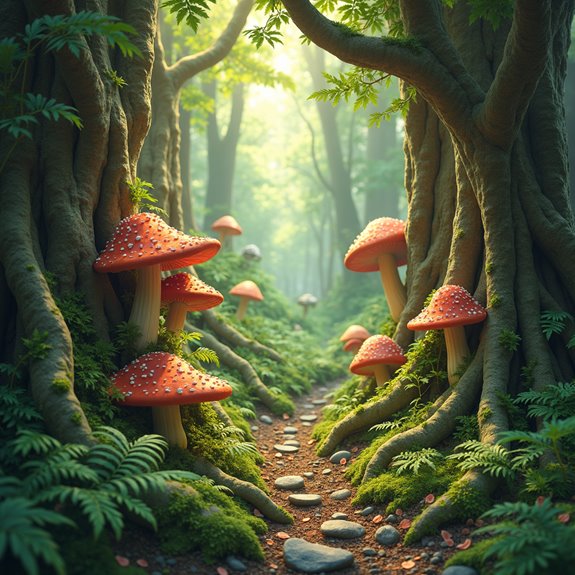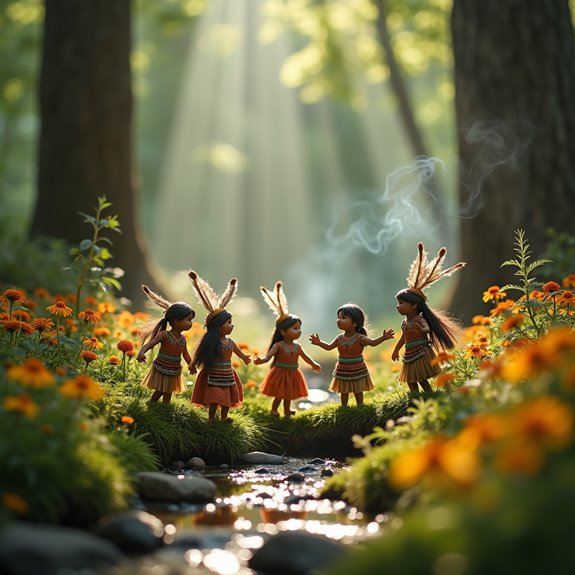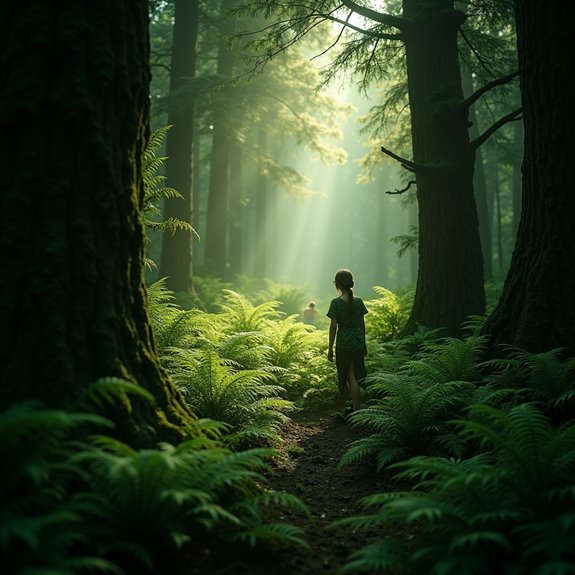What Are the Little People of Native Lore?
The little people of Native American lore represent a fascinating blend of mystery and tradition. Often seen as guardians of nature or cunning tricksters, these beings carry significant cultural weight across various tribes. Their stories convey moral lessons tied to community and environmental respect. As we explore their origins and impact, intriguing questions arise about their role in contemporary culture and the persistent allure of these enigmatic figures. What more can these tales reveal?
Introduction

In the rich tapestry of Native American lore, little people have captivated imaginations and sparked countless stories. These enigmatic figures, often known as “little folk,” vary across tribes and cultures, embodying both benevolence and mischief. Encounters with these beings usually involve themes of respect for nature and balance within the community. Legends describe them as guardians of the earth, protectors of animals, or tricksters who impart life lessons through their antics. Their presence serves as a reminder of the interconnectedness of all living beings and highlights the need for harmony. Despite their small stature, they loom large in the collective consciousness, influencing art, spirituality, and rituals in profound ways. Little people remain an enduring symbol of cultural richness among Native peoples.
Cultural Roots in Folklore

While many cultures around the world feature tales of diminutive beings, little people’s stories in Native American folklore are deeply rooted in the unique traditions and values of each tribe. These tales often embody moral lessons, teaching respect for nature and the interconnectedness of all living things. Little people serve various roles—from protectors of the forests to tricksters reminding humans of their humility. Their presence in stories highlights the importance of community and the necessity of maintaining harmony with the environment. Each tribe adapts these legends, reflecting their specific cultural practices and beliefs. Consequently, little people aren’t merely fantasy figures; they represent a rich tapestry of cultural heritage and wisdom passed down through generations.
Notable Cases or Sightings

Numerous accounts of little people sightings have emerged from various Native American communities, each adding layers of intrigue to these cultural legends. In New Mexico, a family reported seeing small figures darting between the trees during a camping trip. They described the beings as no taller than two feet, with shimmering skin and an ethereal quality. Similarly, in the Pacific Northwest, a hiker claimed to have encountered a circle of tiny, brightly colored figures dancing among the ferns. This sighting, while fleeting, left the hiker convinced they had glimpsed something otherworldly. Across multiple tribes, such encounters spark stories passed down through generations, imbuing the legends with a profound sense of mystery and reverence for the little people said to roam the earth.
Common Theories or Explanations
Sightings of little people have prompted various theories and explanations within Native American cultures and beyond. Many believe these beings serve as guardians of the land, protecting sacred sites and ancient traditions. Others suggest that little people symbolize the spirits of ancestors, providing wisdom and guidance to those who respect their presence. Some theories propose that these figures represent humanity’s connection to nature, embodying the balance between the physical and spiritual worlds. Skeptics argue that sightings stem from psychological phenomena or folklore passed down through generations. Yet, these intriguing narratives continue to captivate imaginations, reflecting deeper cultural values and beliefs. Regardless of the explanation, little people remain a fascinating aspect of the rich tapestry of Native lore.
Frequently Asked Questions
What Do Little People Look Like in Different Cultures?
In various cultures, little people often appear small and humanoid, featuring distinctive traits. Some possess pointed ears or vivid clothing, while others exhibit unique facial features, embodying folklore’s mystique and cultural significance across different societies.
Are There Specific Rituals Associated With the Little People?
In various cultures, specific rituals often arise surrounding little people. They may involve offerings, songs, or dances to honor these beings, reflecting people’s respect and desire for harmony with the spiritual domain they inhabit.
How Do Little People Differ Across Various Native American Tribes?
Little people vary considerably among Native American tribes. Some view them as guardians, while others perceive them as mischievous tricksters. Each tribe’s legends and beliefs shape their unique interpretations, creating diverse cultural narratives surrounding these entities.
Can Little People Communicate With Humans?
In many tales, little people communicate with humans through subtle signs or dreams. They’re said to possess unique wisdom and often share important messages, guiding individuals to embrace respect and harmony within their surroundings.
What Impact Do Little People Have on Modern Storytelling?
Little people influence modern storytelling by inspiring tales of wonder and challenge. Writers often weave their characteristics into narratives, encouraging audiences to explore themes of belief, connection, and the mysteries that lie within the unknown.


